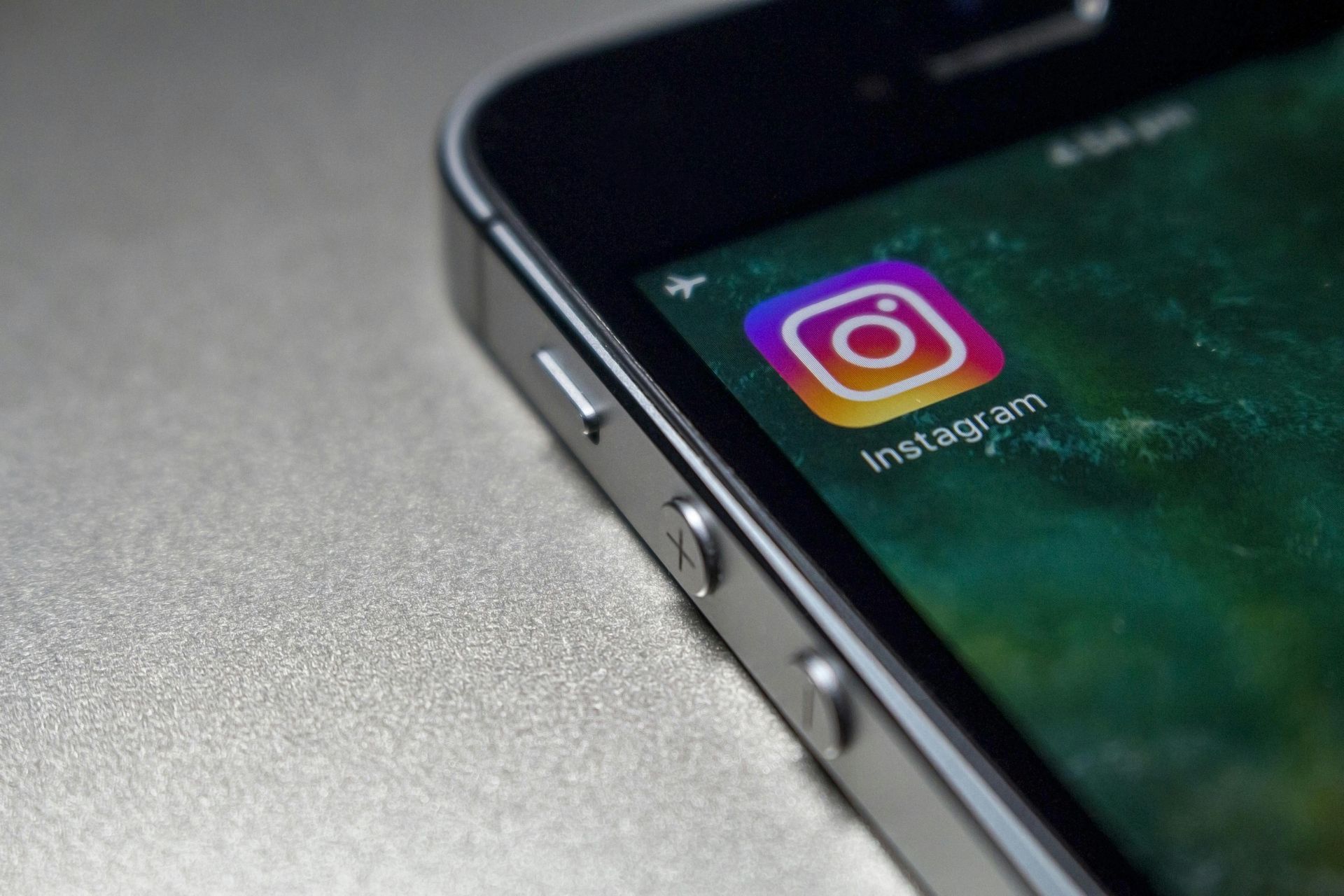Email marketing is not new, and that is exactly why people underestimate it. It doesn’t have the sheen of a brand new platform or the hype cycle of a new ad channel, but that’s actually an advantage. While social reach is throttled by algorithms and ad costs keep rising, email gives you a direct, owned line to the people most likely to buy from you, come back to you, and advocate for you. It’s one of the few channels where you control the audience, the message, the timing, and the follow-up. When someone joins your list, they are essentially saying you have permission to speak to them directly. That permission, handled with respect, is leverage.
The core difference between email and almost everything else in digital marketing is intent. A person on your email list may not always be ready to buy right now, but they have already demonstrated enough curiosity or trust to opt in. That action puts them at a higher value than a random passerby on social or a cold visitor who bounced from your site in eight seconds. Email lets you continue that conversation over days, weeks, months, sometimes years, without paying a gatekeeper to reach them again. You are not starting over every time. You are building a relationship that compounds.
Email also performs. It continues to outperform most other channels on pure return on spend when it’s done well. It can generate immediate traffic, recover abandoned revenue, introduce new products, and revive inactive buyers. It supports product launches. It supports retention. It supports upsell. It supports customer education. For many businesses, especially eCommerce, SaaS, and services with any sort of consultative sale, email is not just a marketing function. It is a revenue function.
What Makes Email Marketing So Valuable
The most important reason email matters is that it is direct. There is nobody in between you and the person you’re talking to. There is no algorithm deciding that only seven percent of your audience gets to see what you wrote. There is no bid auction driving up your cost this week. You send, they receive. That sounds almost too simple, but that level of control is increasingly rare.
Email is also flexible. You can announce a launch at 9am and drive traffic at 9:05. You can shift messaging fast if something changes in the market. You can share content that educates and builds trust long before you ask for a transaction. You can maintain context. If someone downloaded a guide about a specific pain point, you can follow up with content that speaks directly to that pain point instead of blasting them with generic messaging for months.
Another major value is relationship building at scale. Relationship is not just sending discounts. Relationship is teaching people how to get more out of what they already bought. It’s being useful, even when there’s nothing to sell that day. It’s sharing expertise in a way that positions your brand as the default answer to a certain type of problem. When you do that consistently, you stop being just another option. You become the brand they expect to hear from.
And then there’s cost. Email remains one of the most cost-effective marketing channels, because so much of it can be automated once the systems are set up. Welcome sequences, onboarding series, re-engagement flows, abandoned cart recovery, renewal reminders, upsell recommendations — these are not messages you rewrite every time. They’re automated, behavior-based touchpoints that continue running and producing results long after you’ve built them. That allows a small team to operate with the maturity of a much larger one.
The Core Types of Marketing Emails
Email is not one thing. Different messages serve different jobs, and the brands that treat each type with intention tend to outperform the ones who “blast the list” with the same promotional copy every time.
Newsletters are the steady heartbeat of brand presence. A good newsletter doesn’t just pitch; it informs, contextualizes, and frames. It keeps you in someone’s inbox in a way that feels valuable rather than intrusive. A strong newsletter can carry updates, perspective, best practices, behind-the-scenes thinking, and relevant stories. Over time, it becomes part of the subscriber’s routine. That familiarity builds trust, and trust lowers resistance when you finally do present an offer.
Autoresponders, especially welcome sequences, are where a lot of revenue is either captured or lost. When someone joins your list, that is one of the highest-intent moments you will ever get. Autoresponders acknowledge that moment and guide it. A thoughtful welcome series can introduce the brand, set expectations, deliver on whatever was promised at signup, and suggest a next step. It can also qualify the subscriber by inviting them to self-select what they care about so future messaging is more relevant.
Content digests serve a different purpose. Instead of assuming people will find your blog, video, or playbook on their own, you curate the best of what you’ve created and deliver it. This does two things at once. It drives predictable traffic back to owned content, and it reinforces your perceived expertise. You’re shaping how your audience understands the space you operate in. You’re not just selling a product, you’re shaping thinking.
Promotional emails are more direct. They are built to drive action now. That could be a seasonal offer, a launch announcement, a limited-time bundle, a price increase warning, a restock alert, an enrollment deadline, or a bonus expiring. The key with promotional emails is clarity and timing. You have to state what’s available, why it matters, and why it matters now. You also have to send these to the right people. The same promotion does not land the same way everywhere. A first-time buyer may need social proof and risk reduction. A repeat buyer may just need urgency and access.
Abandoned cart emails are often the single most profitable automated flow for commerce-driven businesses. When someone adds something to their cart and walks away, it’s almost never random. There’s friction. Doubt. Distraction. Unanswered questions. A simple, respectful reminder — ideally paired with context or reassurance — can bring that person back. This works because the intent is already there. You’re not creating desire from scratch. You’re clearing the last barrier.
Re-engagement emails exist to wake up people who have gone quiet. Every list decays. People stop opening, stop clicking, stop caring. You can either keep sending to them and poison your deliverability, or you can actively try to win them back with relevance. This is where tone matters. You’re not guilting them. You’re offering them a reason to keep paying attention, or you’re giving them a graceful way to step out. Both outcomes improve the health of your list.
Behavior-based and transactional emails quietly carry a lot of weight. A receipt email, a password reset, a booking confirmation, a shipping notification, a milestone achievement notice — all of these are technically transactional, but they are also high-trust touchpoints. People open them. That makes them prime real estate for reassurance, onboarding guidance, next-step education, and gentle expansion. If you’re not treating these as part of your brand voice and value delivery, you’re leaving a lot on the table.
Drip campaigns are longer-form nurture sequences. They’re ideal for higher-consideration offers, complex services, or B2B sales cycles. Instead of demanding “buy now,” they walk someone through understanding the problem, reframing the stakes, illustrating outcomes, overcoming objections, and making the path to action feel safe. Drip done well doesn’t feel like pressure. It feels like clarity.
Strategy Before Sending
Email works best when it is driven by intention rather than habit. A real email strategy starts by asking what you’re trying to achieve, who you’re talking to, what they actually care about, and where they are in their decision process. Sending a discount code to someone who just bought yesterday is noise. Sending a long educational nurture series to someone who’s actively trying to check out is friction. Relevance is leverage.
Segmentation is what makes relevance possible. Instead of treating your list like one giant blob, you divide it into meaningful groups. New leads are not the same as long-time loyal buyers. People who downloaded a pricing sheet are not the same as people who just read a blog post. Someone who visits your pricing page five times in a week is not the same as someone who hasn’t opened an email in four months. When you segment, you can speak directly to the state of mind each group is actually in. Engagement goes up. Spam complaints go down. Revenue per send improves.
Personalization amplifies that effect. Personalization is not only “Hi, Firstname.” Real personalization is showing someone content, recommendations, and offers that reflect their behavior, their stage, or their past interaction with you. A returning customer might see accessory recommendations or advanced tips. A prospect might see social proof and step-by-step clarity. A lapsed account might see a simplified path to reactivate without friction. The more the email feels like it was written for one person instead of a crowd, the harder it is to ignore.
Every strategy also needs testing. It is nearly impossible to predict with certainty which subject line, layout, CTA phrasing, or send time will perform best with your audience. A/B testing removes ego from that decision. Instead of guessing, you run controlled variations and let behavior answer the question for you. Over time, those learnings compound into a voice, rhythm, and creative standard that consistently performs.
Finally, a defensible strategy respects consent and expectations. People should know what kind of email they’re going to get when they sign up. They should be able to opt out easily. You should not bury that. Respecting boundaries actually improves long-term list health because you’re not constantly irritating people who don’t want what you’re sending. The people who remain are warmer, more attentive, and more likely to convert.
ESPs, Tools, and the Question of Where Your Emails Actually Come From
Behind every high-performing email program is an Email Service Provider, or ESP. An ESP is more than a sending tool. It’s your infrastructure for segmentation, automation, scheduling, compliance, analytics, and in many cases, revenue attribution. Choosing one is less about brand loyalty and more about fit.
Some ESPs lean transactional. They focus on receipts, confirmations, password resets, account updates, and event-driven messaging. This is essential for product experience. Others lean toward marketing automation. They focus on newsletters, promotions, nurture flows, cart recovery, and customer lifecycle messaging. Some do both and layer on advanced features like dynamic personalization, behavioral triggers, and visual automation builders.
For eCommerce brands, platforms like Klaviyo and Omnisend are popular because they plug deeply into purchase data. They make it easy to send “you left this behind,” “back in stock,” “you might also like,” and post-purchase follow-ups that feel specific rather than generic. For businesses with longer or more consultative cycles, tools like HubSpot become valuable because marketing emails, sales activity, lead scoring, and CRM data all live in one ecosystem. That shared context means the sales team can see what marketing has already said, and marketing can see what actually closed.
There’s also a difference between all-in-one systems and specialized systems. A CRM suite with email built in is convenient and scalable, but it may not always have the deepest feature set for sophisticated campaign work. A specialized ESP may offer better segmentation, more granular reporting, richer automation triggers, and a faster path to experiment. The tradeoff is that you may need to integrate data between systems instead of having everything under one roof. The decision usually comes down to growth stage, internal skill set, regulatory needs, and how tightly you want sales, marketing, and service to share context.
No matter which provider you choose, integration matters. Your ESP should be able to pull in the signals that define intent — site behavior, product interest, purchase history, lifecycle stage, engagement history — and use those signals to drive automated sends. It should also be able to push data back out, so your team can see who is engaging, which messages lead to revenue, and where handoffs should happen. If that loop is broken, you’re guessing.
Design, Creative, and Making an Email Worth Opening
The inbox is noisy. You are not only competing with other brands, you are competing with receipts, calendar notifications, social alerts, bank statements, internal memos, personal notes, and a thousand other distractions. Design and copy decide whether you get ignored or skimmed or clicked.
Strong email design is not about being flashy. It is about being clear. The person opening your message should immediately understand what this email is about, why they should care, and what one action they can take next. That means hierarchy matters. Headline, supporting copy, proof, call to action — in that order. It also means mobile matters. Most people are opening on their phone. If your layout is cramped, your text is tiny, your button is impossible to tap, or your images take forever to load, you’re quietly burning intent.
Copy carries equal weight. Good email copy sounds like a human speaking to one person, not a committee speaking to a demographic. It’s concrete, specific, and honest. It tells the reader what they’ll gain, not just what you want. It may use urgency, but it doesn’t rely only on urgency. It shows confidence without sounding desperate. You can feel the difference immediately between “Please buy now, limited time only” and “Your early access closes tonight — here’s what’s inside before it’s public.” One feels like pressure. The other feels like access.
Subject lines and preheaders are their own craft. They’re the handshake. If they’re weak, the rest of the message never gets seen. The best subject lines are clear, curiosity-driving, or value-forward, without slipping into bait that disappoints. The preheader text then supports the subject line and sets context. Together, they should tell a complete mini-story in under a sentence and a half.
Underneath all of this lives deliverability. You can write the best email in the world, but if your messages keep landing in junk, you’re invisible. Deliverability depends on permission, reputation, and hygiene. If you send to people who never engage, your sender reputation decays. If you ignore unsubscribes or buy lists, you get flagged. If you fail to authenticate your sending domain with standards that help mailbox providers trust you, your deliverability suffers. List cleaning — removing bad addresses, suppressing inactive contacts, honoring opt-outs — is not optional busywork. It is how you stay in front of the people who actually want to hear from you.
Regulation is part of the job as well. Laws like CAN-SPAM and GDPR exist to protect people from abuse. Compliance is not just about avoiding fines. It’s about signaling that you respect the person you’re emailing. Clear identity, accurate sender info, a working unsubscribe, truthful content, and transparent consent build long-term credibility. Credibility keeps you in the inbox.
Automation, Lifecycle, and Always-On Revenue
One of the real superpowers of email is that so much of it can run without manual effort after it’s built. Automation is not just about saving time. It’s about timing. Manual sending happens on your schedule. Automated sending happens on the subscriber’s schedule.
A welcome series fires when someone signs up, not next Thursday when you finally have a minute to draft something. An abandoned cart message triggers minutes after someone walks away, when their intent is still warm. A post-purchase follow-up hits shortly after the order arrives, when excitement is high and referral or review energy is strongest. A re-engagement campaign reaches out at the first sign of fading interest, not six months later when that contact is completely gone. A lead nurture sequence drips educational content over time, moving someone from curiosity to clarity to readiness while you sleep.
These flows are not “nice to have.” They are revenue systems. A well-built abandoned cart flow recovers sales that would have disappeared. A strong onboarding sequence reduces refunds and churn because buyers feel supported instead of confused. A consistent post-purchase flow increases average order value over time by introducing complementary products or higher tiers in a way that feels helpful instead of pushy. A reactivation flow saves you from constantly needing new leads because you’re not letting older leads quietly die.
Advanced teams go further with lead scoring and behavioral triggers. Lead scoring assigns value to actions a contact takes — opening emails, clicking pricing pages, viewing demos, attending webinars, returning to high-intent content. When that score crosses a threshold, sales gets notified or a high-touch sequence activates. This keeps sales from wasting energy on totally cold leads, and it keeps warm leads from going stale.
There is also a growing frontier in interactive email. AMP email, for example, allows certain actions to happen directly inside the message. In supported inboxes, a user can fill out a form, answer a poll, update a preference, confirm attendance, even start a transaction without being kicked to a landing page. Done well, this reduces friction. Done poorly, it feels gimmicky. The principle remains the same: the easier you make the next step, the more likely people are to take it.
Measuring Performance and Proving ROI
The story of email is not “we sent something.” The story is what that send did. This is where measurement matters. Traditional metrics like open rate, click-through rate, and unsubscribe rate still matter directionally, though privacy changes mean open rate alone is less reliable than it used to be. What matters more now is engagement quality and downstream impact.
Click behavior shows which messages earned attention and which links actually mattered. Conversion rate shows whether those clicks turned into action. Revenue per send and revenue per subscriber show if you’re building a channel that pays for itself. Unsubscribe and spam complaint rates tell you when you’re eroding trust. Bounce rate and deliverability tell you if your list health is slipping.
The goal is to interpret these signals, not just log them. A high open rate and low click rate can mean the subject line worked but the content disappointed. High clicks and weak conversion can mean the landing page didn’t match the promise made in the email. Strong conversion and high unsubscribe can mean you’re getting revenue now at the cost of long-term goodwill, which is not sustainable. Treat these patterns like feedback. Every send teaches you something you can apply to the next one.
The final proof is impact outside the inbox. Do sales conversations feel warmer. Are support tickets lower because onboarding was clearer. Are repeat purchases increasing. Are referrals picking up. Are inactive users returning. Email touches all of that when it’s done intentionally. That’s why leaders who understand its value treat it like an owned growth engine rather than a once-a-week marketing chore.
The Real Advantage
Email marketing is not about blasting promotional codes. It is about running a direct communication channel that educates, reassures, activates, and supports the people most likely to buy from you and stay with you. It is a retention machine. It is an upsell engine. It is a trust builder. It is a product education layer. It is a brand voice delivery system. And yes, it is a sales driver.
The competitive edge comes from taking it seriously. Brands that respect the channel — build thoughtful automations, segment intelligently, write like humans, send with purpose, honor consent, measure outcomes honestly — are able to create predictable revenue lift without spending more every single time they want attention. Brands that treat email like an afterthought are constantly starting from zero.
In a world where reach is rented everywhere else, email is one of the few assets you actually own. If you invest in it with care, it will keep paying you back.












